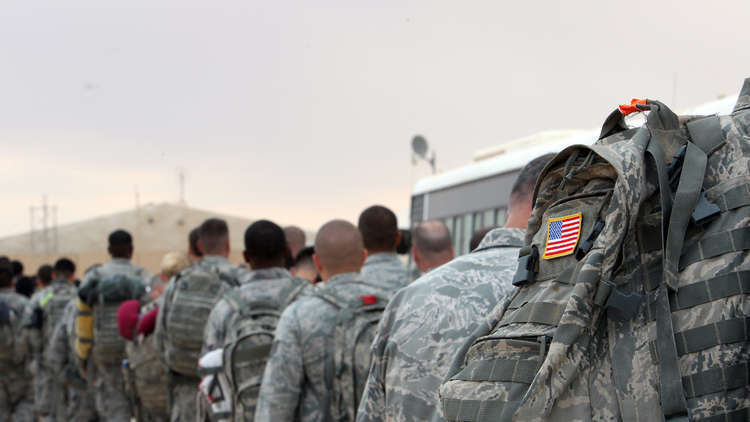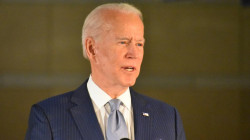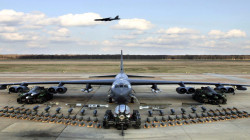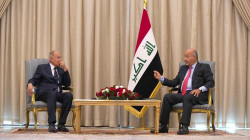Report: potential change coming to the Middle East

Shafaq News / The political and strategic profile of the Middle East is changing as China asserts itself as a major challenger to US unipolar domination and regional states, especially Saudia Arabia, seek more independence in shaping their future. To the extent that the future is predictable, most of the changes appear to be positive, but there are uncertainties about Iran, and Israel remains a wildcard.
America’s influence across the Middle East generally has declined during the past decade, but especially during Joe Biden’s presidency. That decline was inevitable, and is due to a complex mixture of changing global and regional circumstances. Washington has progressively reassessed its primary strategic priorities as China and Russia.
Arguably, too, there’s more ‘stability’ in the Middle East today than at any time during the past decade, which has enabled this shift in priorities. Reading the winds of change, regional states are responding to the opportunities offered to lessen local conflict and tensions and explore political and economic cooperation.
For the US, and others, China’s policies following Xi Jinping’s election as premier in 2013 have been of increasing concern, especially in the Northwest Pacific. The major issues continue to be China’s militarisation of the South China Sea and ambitions for Taiwan, but the broader reach and ambitions of Xi’s regime are also of great concern.
Russia’s aggression towards Ukraine, and especially its 2022 invasion, have also sharply affected US strategic and military concerns.
At the same time, the Middle East no longer has as much strategic importance to the US, due to its changed sourcing of oil. Since 2020, the US has transitioned from a net importer to a net exporter of oil. Today, more than two-thirds of US oil imports comes from the Americas, including around 60% from Canada and 10% from Mexico. Only 11% of US oil imports now come from the Middle East, some 7% from Saudi Arabia and most of the remainder from Iraq.
Moreover, the US is suffering the challenges of regional war-weariness and political change. Its 2003 invasion failed to deliver a united and more stable Iraq and 20 years of war in adjacent Afghanistan ended in spectacular failure. Bashar al-Assad regime’s remains firmly in control of Syria and Hezbollah remains firmly lodged in Lebanon, as do the Houthis in Yemen. Washington’s intense application of its political and economic policies failed to bring about ‘regime change’ in Iran. And, clearly, the US has limited influence over Israeli policies concerning Palestine.
In addition, the fact that not one US ally in the Middle East has condemned the Russian invasion of Ukraine has not gone unnoticed in Washington.
Despite this, the US remains committed to the Middle East, politically and as a security backstop. It continues to maintain some 30,000 troops and major naval and air bases in the region. It also demonstrated its willingness to bare its teeth during the war against Islamic State in Syria and Iraq during 2014–2019, and in counterterrorism and counter-piracy operations since then. But the regional game has changed and Washington has adjusted its policies and tactics accordingly.
Beijing already has strong economic ties across the Middle East and is looking to expand its political and strategic influence.
China is the region’s major trading partner. Of the 13 Middle Eastern countries (the Gulf Cooperation Council states, the Levant, Iran, Syria and Yemen), China is the primary export destination of six, and between the second and fifth export destination of another four. For all but four countries (Syria, Jordan, Lebanon and Israel), their principal export is oil. In total, China receives nearly 50% of its oil from countries bordering the Gulf, and nearly a quarter from two countries, Saudi Arabia (18%) and Iran (7%). For Saudi Arabia, Iran, Kuwait and Yemen, China is the primary trading partner for both exports and imports.
China’s primary political-strategic aim is, and must be, to promote regional stability to protect these critical oil supplies. The real purpose of the ‘peace agreement’ that China negotiated between Saudi Arabia and Iran in March was to protect supplies from those countries by avoiding direct or indirect hostilities between them that could disrupt onshore refining or oil shipments through the Strait of Hormuz.
Given China’s regional economic status, increased political and strategic outreach is inevitable. The ‘peace agreement’ concurrently enabled China to put itself forward as a new regional peace negotiator. That’s a receptive start, but given its close ties with Russia and Iran, China will need to work hard if wants to gain wider acceptance for this role in the Middle East.
Saudi Arabia’s prime minister and de facto ruler, Crown Prince Mohammed bin Salman (known as MBS), has recognised the diverging interests between Riyadh and Washington and sought opportunities for Saudi-led independent initiatives, domestic and regional, to fill the gap. These include a closer personal relationship with Xi, challenging US leadership within OPEC on oil pricing and production, greater accommodation with regional rivals such as Syria and Iran, and leadership outreach across the Arab and Sunni communities.
Integrated with these initiatives is MBS’s ambition to build a future for Saudi Arabia beyond oil. His Vision 2030 plan envisages a megacity with massive domestic and foreign investment creating new and diversified industries to meet future global industrial and technical needs.
Iran’s hardline conservative government remains in power. Current US policy is to retain ‘maximum pressure’ for change, counter Iran’s influence wherever possible among neighbouring states, and seek to deter, primarily through indirect negotiations, any Iranian intent to develop nuclear weapons or the capability to do so.
Iran’s influence across the regional Shiite community and its military support to militia in Iraq, Lebanon and Yemen, along with the Sunni militia in Syria and Gaza, remains unbroken. Economic survival continues, in part through circumventing sanctions. There’s no evidence that Iran is making a testable nuclear bomb, but it will leverage that possibility for sanctions relief.
How long the Iranian government can survive is a matter of speculation. Although dissent is widespread, it remains effectively suppressed. The potential for change might next arise at or out of the 2024 national elections, or a need to replace the supreme leader.
The major potentially destabilising wildcard in the Middle East is Israel’s policy towards and treatment of Palestinians. A recent statement by Israeli Finance Minister Bezalel Smotrich dismissing the concept of a Palestinian nation has challenged not only the US but Arab signatories to the Abraham Accords.
Despite this, the signs for greater regional stabilisation are encouraging, but a week is a long time.
(ASPI)





